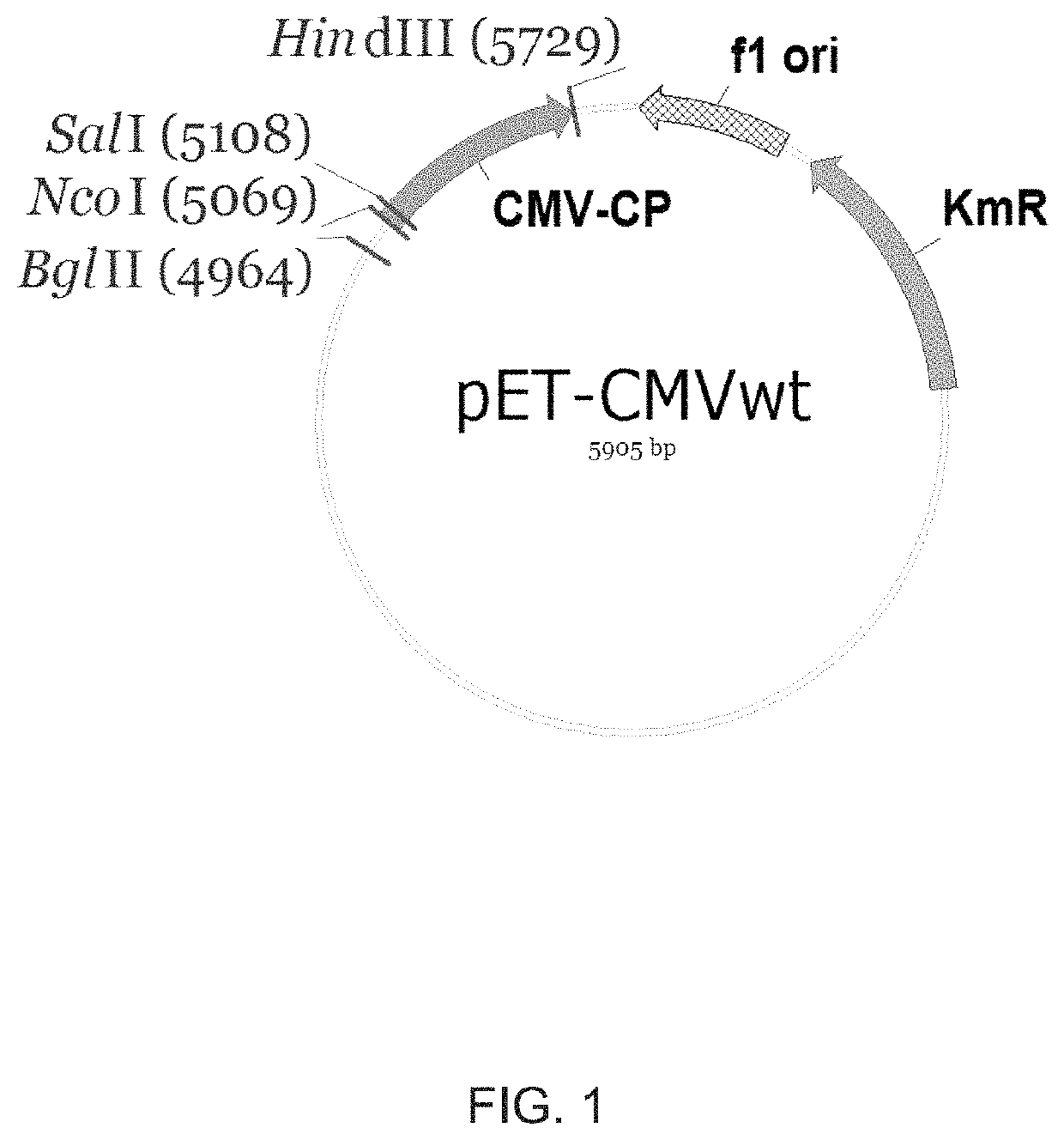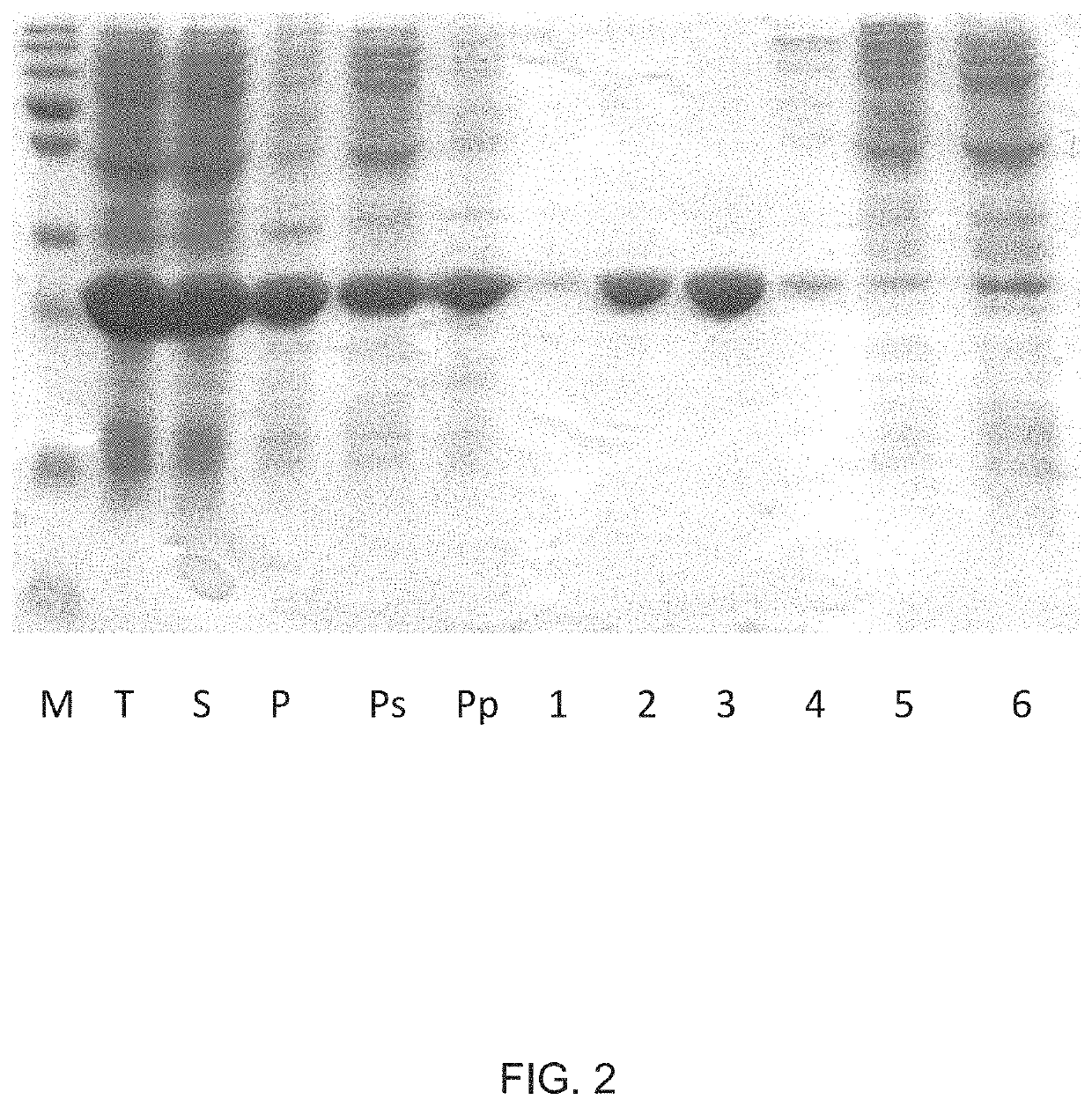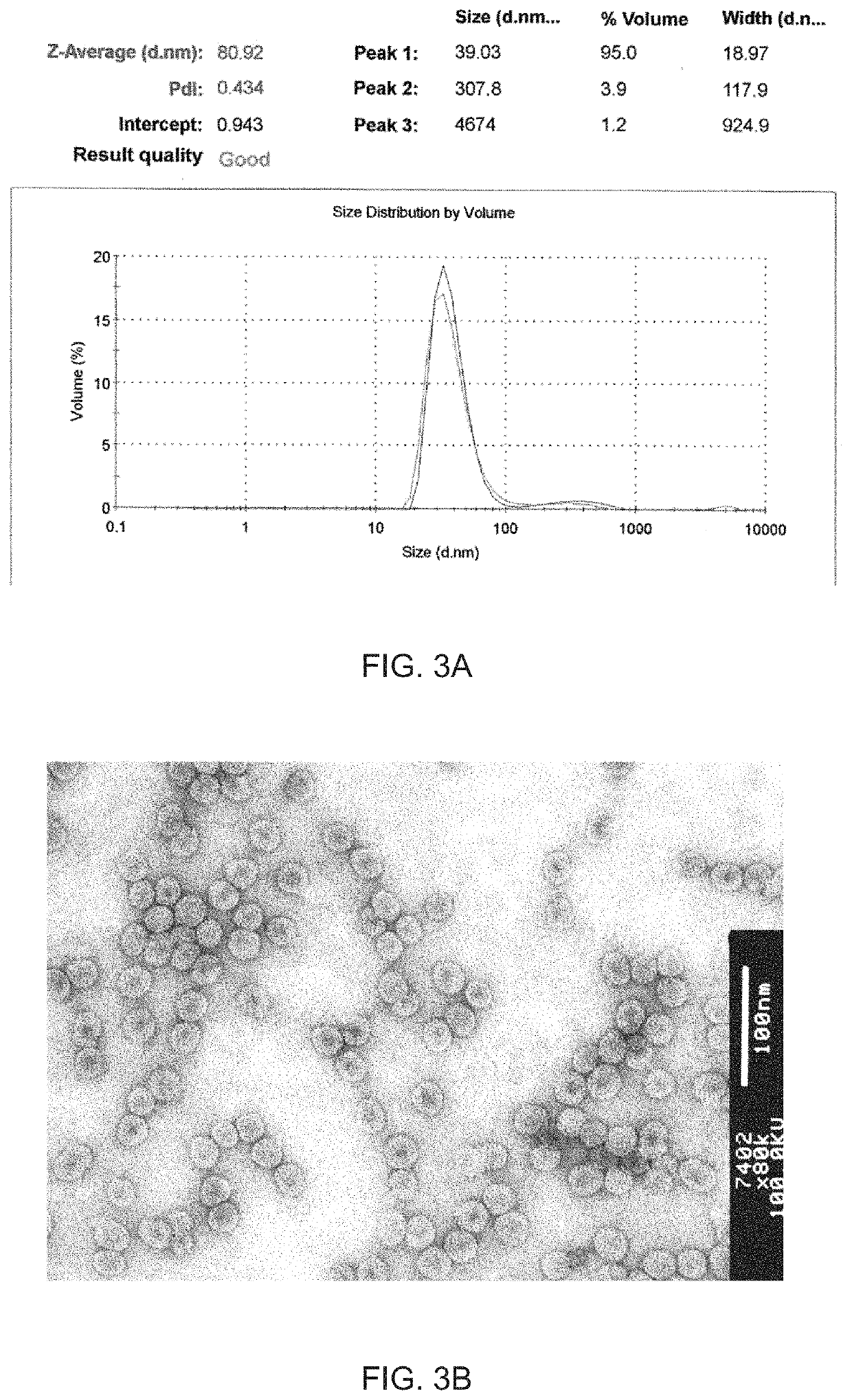Modified virus-like particles of CMV
a technology of viruslike particles and modified particles, applied in the field of viruslike particles, can solve the problems of affecting the inability to express epitopes facing the inside, and the inability of vaccines, such as the vaccine against hepatitis b, to achieve the effect of increasing the overall immune response, increasing the immunogenicity of vlps, and preventing the formation of new viruses
- Summary
- Abstract
- Description
- Claims
- Application Information
AI Technical Summary
Benefits of technology
Problems solved by technology
Method used
Image
Examples
example 1
Isolation and Cloning of a Coat Protein (CP) of Cucumber Mosaic Virus (CMV)
[0186]The total RNA from CMV-infected lily leaves collected from a private garden in Riga, Latvia, was isolated using TRI reagent (Sigma, Saint Louis, USA) in accordance with manufacturer's recommendations. For cDNA synthesis, OneStep RT-PCR kit (Qiagen, Venlo, Netherlands) was used. For amplification of the CMV CP gene, the primer sequences were chosen following analysis of CMV sequences from GenBank: CMcpF (CACCATGGACAAATCTGAA TCAACCAGTGCTGGT) (SEQ ID NO: 8) and CMcpR (CAAAGCTTATCAAACTGGGAGCA CCCCAGATGTGGGA) (SEQ ID NO:9); NcoI and HindIII sites underlined. The corresponding PCR products were cloned into the pTZ57R / T vector (Fermentas, Vilnius, Lithuania). E. coli XL1-Blue cells were used as a host for cloning and plasmid amplification. To avoid RT-PCR errors, several CP gene-containing pTZ57 plasmid clones were sequenced using a BigDye cycle sequencing kit and an ABI PRISM 3100 Genetic analyzer (Applied Bi...
example 2
Expression of CP of SEQ ID NO:1 in E. coli Leading to VLPs of CMV
[0187]To obtain CMV VLPs, E. coli C2566 cells (New England Biolabs, Ipswich, USA) were transformed with the CMV CP gene-containing plasmid pET-CMVwt. After selection of clones with the highest expression levels of target protein, E. coli cultures were grown in 2×TY medium containing kanamycin (25 mg / l) on a rotary shaker (200 rev / min; Infors, Bottmingen, Switzerland) at 30° C. to an OD600 of 0.8-1.0. Then, the cells were induced with 0.2 mM IPTG, and the medium was supplemented with 5 mM MgCl2. Incubation was continued on the rotary shaker at 20° C. for 18 h. The resulting biomass was collected by low-speed centrifugation and was frozen at −20° C. After thawing on ice, the cells were suspended in the buffer containing 50 mM sodium citrate, 5 mM sodium borate, 5 mM EDTA, 5 mM mercaptoethanol (pH 9.0, buffer A) and were disrupted by ultrasonic treatment. Insoluble proteins and cell debris were removed by centrifugation (...
example 3
Cloning of a Modified Coat Protein of CMV Containing an Tetanus Toxoid Epitope (CMV-Ntt830)
[0189]To replace the original amino acids at the N-terminus of CMV CP of SEQ ID NO:1 against foreign epitope sequences, as a template for PCR amplification and mutagenesis the pET-CMVwt plasmid was used. Internally in CMVwt gene located SalI site (FIG. 1) was used for cloning corresponding PCR products.
[0190]To introduce the tetanus toxoid epitope coding sequence in CMVwt gene, two step PCR mutagenesis was necessary. For the first step amplification following primers were used for PCR: pET-220 (AGCACCGCCGCCGCAAGGAA (SEQ ID NO: 11)—upstream from polylinker, the amplified region includes BglII site) and CMV-tt83-1R (ATTTGGAGTTGGCCTTAATATACT GGCCCATGGTATATCTCCTTCTTAAAGT) (SEQ ID NO:12). For the second round the PCR product from the first round was diluted 1:50 and re-amplified with primers pET-220 (SEQ ID NO: 11) and CMV-tt83Sal-R2 (GACGTCGACGCTCGGTAATCCCGATAAATTTGGAGTTG GCCTTAATATACTG) (SEQ ID N...
PUM
| Property | Measurement | Unit |
|---|---|---|
| temperature | aaaaa | aaaaa |
| temperature | aaaaa | aaaaa |
| mass | aaaaa | aaaaa |
Abstract
Description
Claims
Application Information
 Login to View More
Login to View More - R&D
- Intellectual Property
- Life Sciences
- Materials
- Tech Scout
- Unparalleled Data Quality
- Higher Quality Content
- 60% Fewer Hallucinations
Browse by: Latest US Patents, China's latest patents, Technical Efficacy Thesaurus, Application Domain, Technology Topic, Popular Technical Reports.
© 2025 PatSnap. All rights reserved.Legal|Privacy policy|Modern Slavery Act Transparency Statement|Sitemap|About US| Contact US: help@patsnap.com



